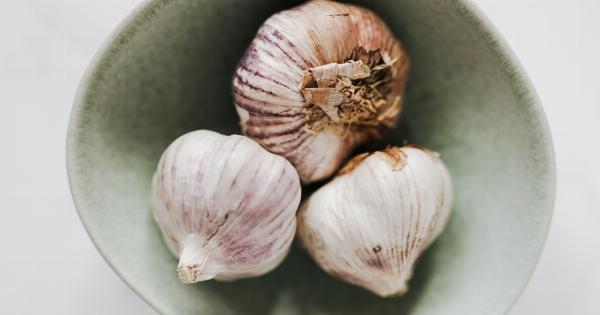Cinnamon, a popular spice derived from the inner bark of several tree species, has been used for centuries in traditional medicine and culinary practices.
It boasts a distinct flavor and aroma, making it a quintessential ingredient in a wide range of dishes and beverages.
While cinnamon is generally considered safe for consumption, some individuals may develop an allergic reaction to this spice. Understanding cinnamon allergy symptoms is crucial to avoid potential health complications and seek appropriate substitutes.
In this article, we will explore the symptoms of cinnamon allergy and suggest alternative spices to incorporate into your favorite recipes.
Common Symptoms of Cinnamon Allergy
Allergic reactions to cinnamon can vary from mild to severe, depending on an individual’s sensitivity. Some of the most commonly reported symptoms include:.
1. Skin Reactions
Many people with cinnamon allergies experience skin-related symptoms such as:.
- Rashes or hives: These may appear as itchy, red, and swollen bumps on the skin.
- Itchy or tingling sensation: Cinnamon can cause an irritating itch or tingling feeling on the skin.
- Contact dermatitis: Direct contact with cinnamon can lead to dermatitis, characterized by redness, inflammation, and skin peeling.
2. Respiratory Issues
Certain individuals may develop respiratory symptoms upon exposure to cinnamon, including:.
- Runny or stuffy nose: Allergies to cinnamon can trigger nasal congestion, sneezing, and a runny nose.
- Shortness of breath: In severe cases, an allergic reaction can cause difficulty breathing or wheezing.
- Asthma exacerbation: Those with pre-existing asthma may experience worsened symptoms after consuming or inhaling cinnamon.
3. Digestive Distress
For some individuals, cinnamon allergy can manifest as gastrointestinal symptoms, such as:.
- Abdominal pain: Consuming cinnamon may result in stomach pain or cramping.
- Nausea and vomiting: Allergic individuals may experience nausea or even vomiting after ingesting cinnamon.
- Diarrhea: Cinnamon can cause an upset stomach and lead to loose bowel movements.
4. Oral Allergy Syndrome
In rare cases, individuals with cinnamon allergies may experience oral allergy syndrome. This condition causes itchiness or swelling in the lips, tongue, and throat after consuming cinnamon.
It is often associated with cross-reactivity to other allergens, such as birch pollen or certain fruits.
Suggested Cinnamon Substitutes
If you suspect or have confirmed a cinnamon allergy, it’s important to substitute this spice with other options that provide similar flavors. Here are some excellent cinnamon substitutes:.
1. Cardamom
A member of the ginger family, cardamom offers a warm and slightly sweet flavor that complements both sweet and savory dishes. It is commonly used in baked goods, curries, and hot beverages.
2. Allspice
Allspice, derived from dried berries, combines flavors reminiscent of cinnamon, nutmeg, and cloves. It is a versatile spice suitable for a wide range of recipes, including stews, cakes, and sauces.
3. Nutmeg
With its distinct sweet and slightly nutty flavor, nutmeg serves as an excellent replacement for cinnamon. It pairs well with both sweet and savory dishes, such as custards, pies, and soups.
4. Ginger
Ginger adds a zesty and mildly spicy kick to recipes and can be used as a substitute in baked goods, beverages, and stir-fries. Its unique flavor profile complements both sweet and savory dishes.
5. Cloves
Known for their warm and aromatic taste, cloves can substitute cinnamon in various recipes, particularly desserts and spicy dishes. They can be used whole or ground.
6. Anise
Also referred to as aniseed, this spice offers a licorice-like flavor and fragrance. It works well in both sweet and savory recipes, such as cookies, bread, and sausages.
7. Vanilla Extract
While not a direct substitute, adding a dash of vanilla extract to recipes can help enhance the sweetness and warmth usually associated with cinnamon.
8. Mace
Mace, derived from the same plant as nutmeg, has a milder and more delicate flavor. It can be used as a cinnamon alternative in recipes where a subtle spiciness is desired.
9. Pumpkin Pie Spice
A pre-made blend of cinnamon, nutmeg, cloves, and ginger, pumpkin pie spice is an excellent substitute when cinnamon is needed in fall-inspired recipes such as pies, lattes, or oatmeal.
10. Coriander
Coriander seeds have a unique flavor profile, with hints of lemon and sage. Ground coriander can be used as a cinnamon substitute in various dishes, including soups, stews, and roasted vegetables.
Conclusion
While cinnamon possesses numerous health benefits and delicious flavor, it is essential to be aware of potential allergic reactions.
If you experience any adverse symptoms after consuming cinnamon, consult a healthcare professional to confirm an allergy diagnosis. Fortunately, there are several cinnamon substitutes available that can provide comparable taste and aroma, allowing you to continue enjoying diverse culinary possibilities without compromising your well-being.































